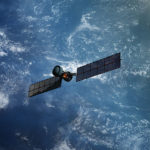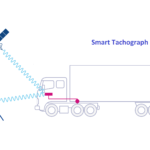
The launches are scheduled between the end of 2020 and mid-2021, using two Ariane 62 rockets – the configuration of Europe’s next-generation launch vehicle that is best suited to haul the two 750 kg navigation satellites into their orbits at 23 222 km altitude.
Under development, Ariane 6 is Europe’s newest launcher, designed to extend guaranteed access to space for Europe at a competitive price. It will operate in two configurations, depending on customer needs: Ariane 62 is fitted with two strap-on boosters while Ariane 64 has four.
“Ariane 6 is not only in full development, but it will soon be put to use,” notes Daniel Neuenschwander, ESA’s Director of Space Transportation. “This contract is a key step in the upcoming ramp-up phase of Ariane 6.”
The Galileos have so far either been launched in pairs by Soyuz from French Guiana or in fours by Ariane 5.
A new Ariane 5 flight is scheduled for the end of this year (12th December), to add four more satellites to the 18-strong constellation already in orbit. This month saw the arrival of the first elements of the rocket in French Guiana, transported aboard the MN Colibri roll-on/roll-off ship. Read more…






